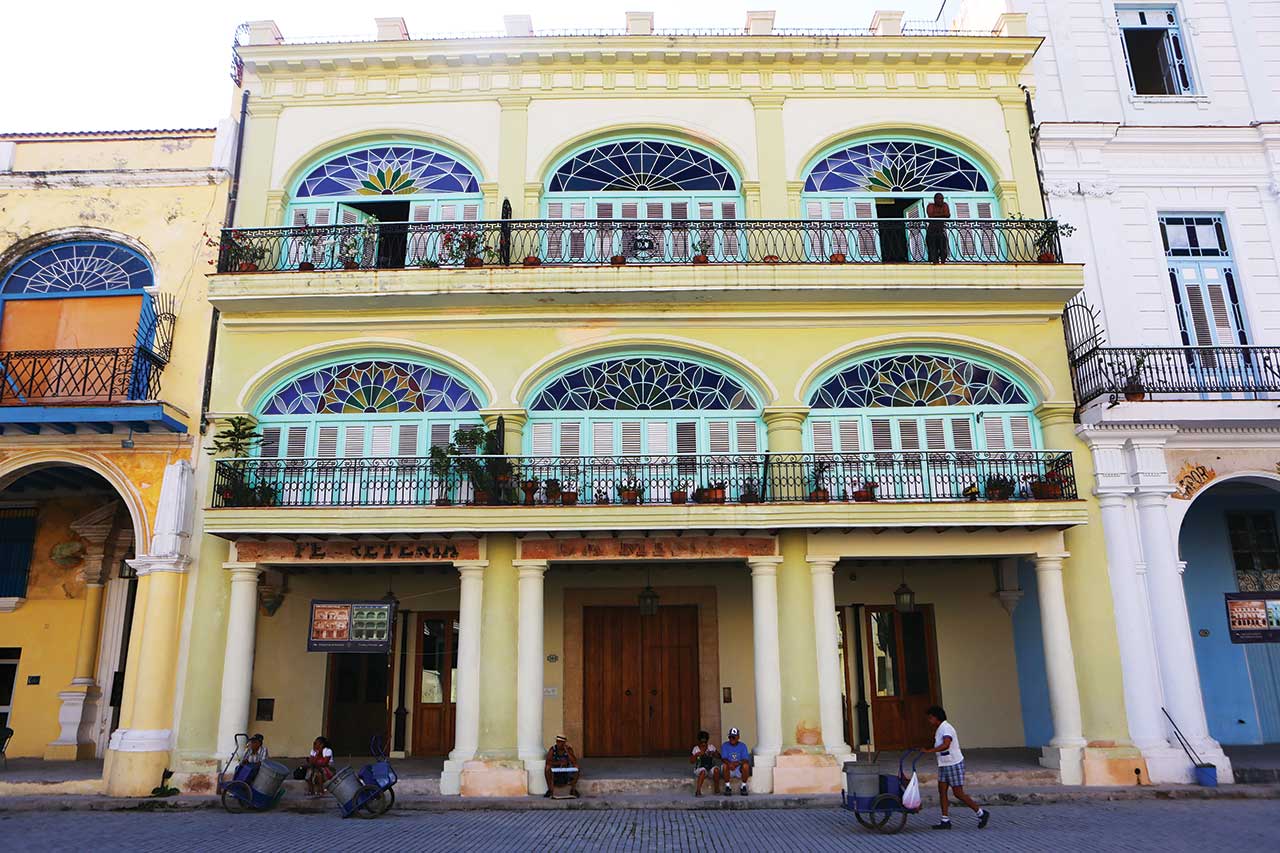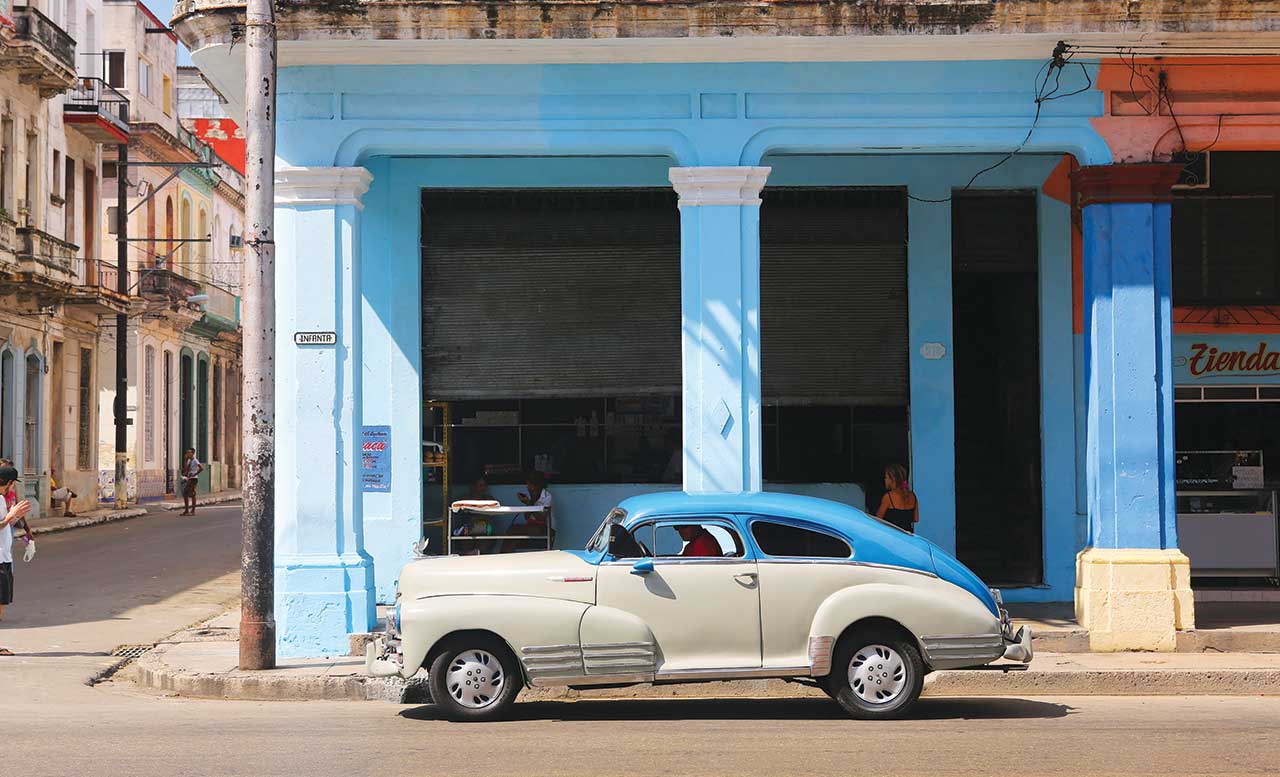Each neighborhood in Havana has its own unique flavor, especially when it comes to their sights and histories. To make your explorations easier, here’s a quick roundup of the highlights of each.

Restored building on Plaza Vieja, Habana Vieja. Photo © Christopher P. Baker.
The finest collection of Spanish colonial buildings in the Americas lines Habana Vieja’s cobbled streets. Stroll the tree-lined Prado, hang out in Hemingway’s old haunts, and people-watch in quintessentially Cuban plazas.
Although its once-regal mansions are now dilapidated, this area features shopping along Calle San Rafael and in Cuatro Caminos, the country’s largest farmers market, and the Malecón—Havana’s seafront drive and undisputed social gathering spot.

1940s car in Centro Habana. Photo © Christopher P. Baker.
South of Habana Vieja and Centro the land rises gently to Cerro, which developed during the 19th century as the place where many wealthy families maintained summer homes on the cooler cerro (hill). The area is replete with once-stately quintas in neoclassical, beaux-arts, and art nouveau styles. Alas, the region is terribly deteriorated, but the majority of buildings transcend sordid.
Hilly Vedado is Havana at its middle-class best, with the University of Havana, historic Plaza de la Revolución, and prime hotels and restaurants like the lavish Hotel Nacional. Walking La Rampa will lead you to cinemas, nightclubs, art deco buildings, and the best ice cream in the city at Parque Coppelia.
With their luxurious residences and new apartment buildings, Playa and Miramar are the face of Cuba’s quasi-capitalist makeover—and possibly its future. The shoreline along 1ra Avenida rivals Miami’s South Beach—not so many miles yet worlds away—and the famed Tropicana nightclub in Marianao is a must-see.
Venture outside the city to check out the national zoo, Parque Lenin, ExpoCuba, Hemingway’s former home, charming provincial towns, botanical gardens, and the popular beaches of Playas del Este.
Excerpted from the First Edition of Moon Havana.